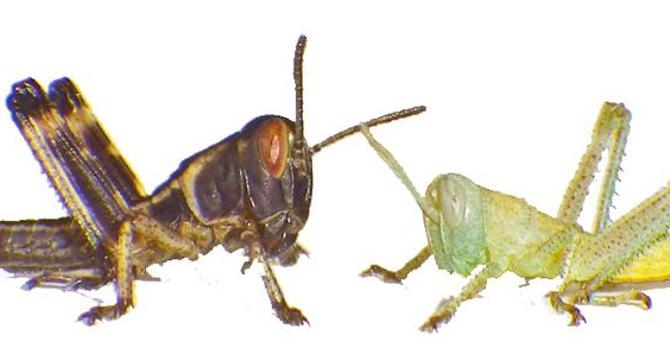Bioengineer
1w
8

Image Credit: Bioengineer
Locust Hatchlings Arrive Ready to Eat in Dry Conditions
- A recent study published in PNAS Nexus explores how female desert locusts adjust their reproductive investments to produce eggs that yield hatchlings with a unique survival mechanism in dry environments.
- Desert locusts display behavioral and physiological plasticity, transitioning between solitary and gregarious phases based on environmental and population factors, impacting morphology and reproduction.
- Research by Koutaro Ould Maeno investigates how moisture and crowding conditions influence egg production and offspring fitness by conducting controlled experiments in laboratory settings.
- Females in crowded conditions tend to lay fewer but larger eggs, with the offspring exhibiting a competitive advantage in resource-scarce environments during the gregarious phase.
- Hatchlings from desiccated eggs emerge with smaller sizes but possess internal yolk reserves, termed the “lunchbox strategy,” aiding their survival in harsh conditions by providing an initial energy source.
- The yolk reserve in hatchlings from desiccated eggs significantly enhances their survival rates, outliving counterparts from wet eggs in starvation tests, showcasing the adaptive advantage in arid environments.
- This allocation of yolk as an immediate energy store buffers against post-hatching food scarcity, proving crucial for survival in sparse environments like the Sahara Desert.
- The study underscores the importance of understanding how insects adapt to environmental stressors through reproductive strategies, offering insights into maternal effects and offspring survival mechanisms.
- Desert locust embryos' “lunchbox strategy” exemplifies an evolutionary response to environmental uncertainty, balancing yolk allocation based on social and environmental cues to enhance survival in arid habitats.
- The research sheds light on the intricate reproductive adaptations of desert locusts, providing implications for pest management, ecological physiology, and predictive modeling in a changing climate.
- As environmental challenges persist, understanding how organisms like desert locusts evolve to thrive in extreme landscapes offers valuable insights for predicting resilience and adaptability in the face of global changes.
Read Full Article
Like
For uninterrupted reading, download the app